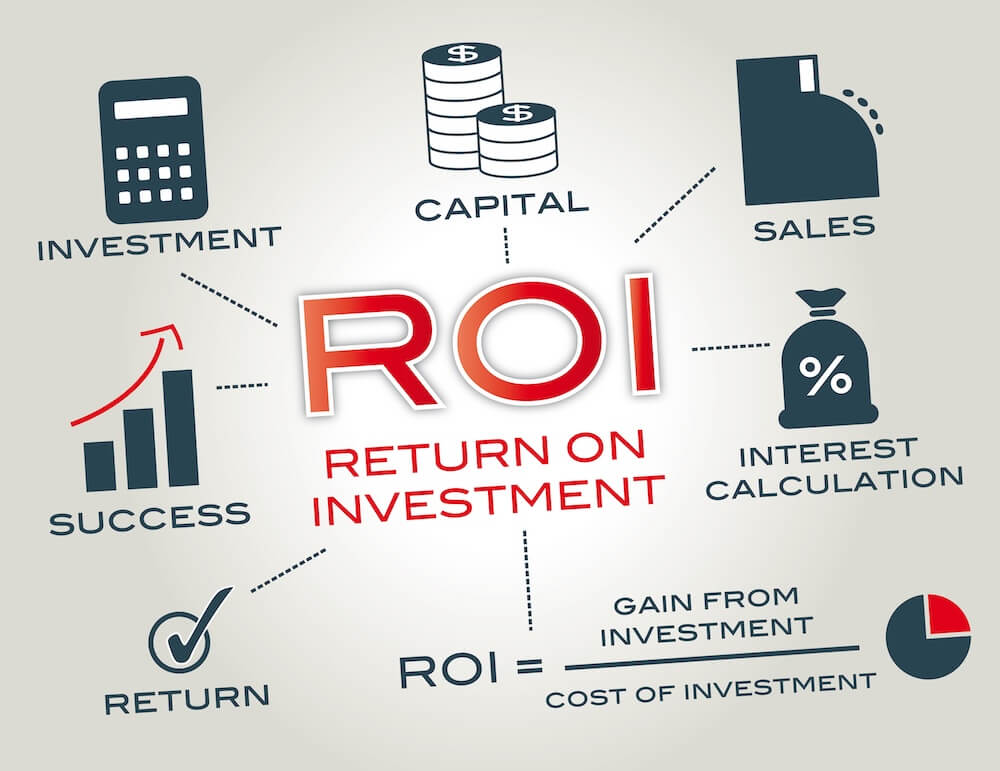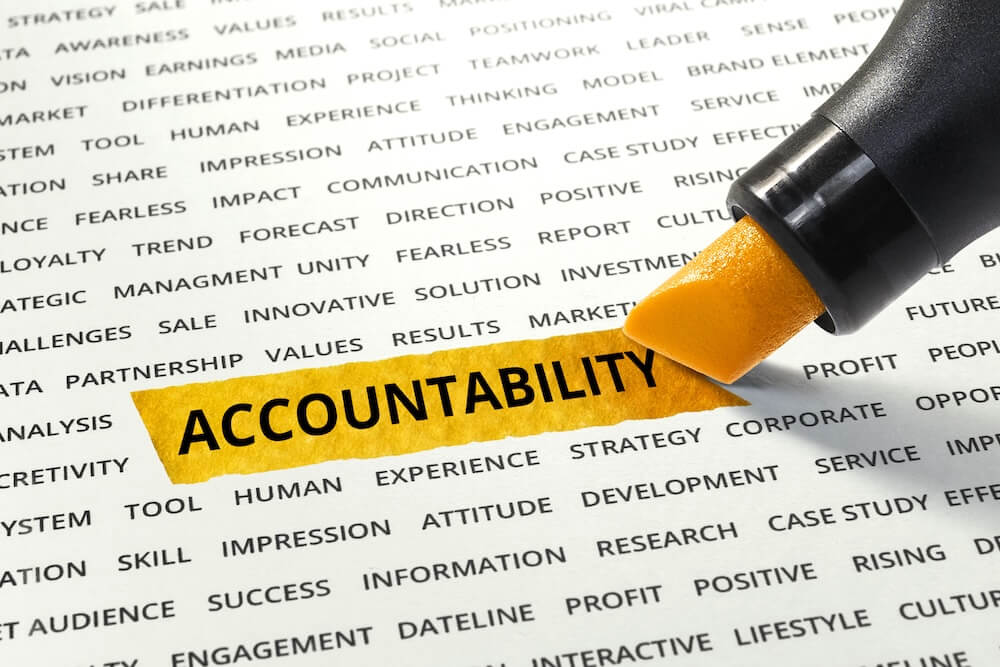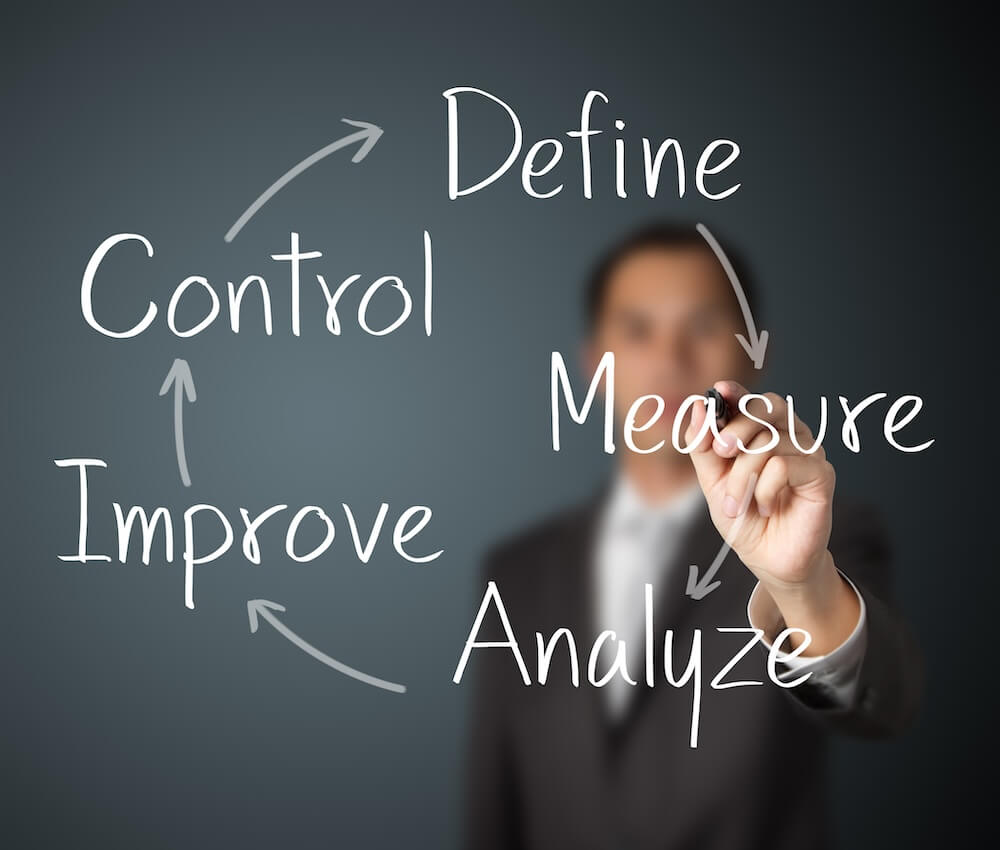Optimizing Industrial Sales Lead Follow Up
Lead Follow Up Axioms in Industrial Manufacturing
- Senior executives dramatically overestimate their team's lead follow up activity and success.
- Therefore, essentially ALL of their decisions on how to generate leads and grow revenue are founded on faulty data/assumptions.
In my experience with industrial manufacturers, CEOs, presidents, GMs, board directors, VPs of sales, and even CFOs are functionally clueless about the success of their lead generation.
The reality is shocking:
- <30% of industrial sales leads are even followed up on
- no documented process, expectation, or accountability exists for lead follow up
- leads cost $thousands more than estimated, particularly when we account for the minority that are actually worked
- goals and criteria to measure return or "success" are rarely established for lead generation "campaigns"
- even small companies, therefore spend $hundreds of thousands based on habit and gut feeling
Here's the more shocking part...NOWHERE in their operations or production would these companies tolerate this unacceptable performance.
Why are marketing and sales treated differently?
Industrial sales leads are a core aspect of every effort to grow revenue.
Is your company optimizing your lead management?
Leads are critical to business growth. Optimizing their generation, cost, and sales conversion are examples of complex challenges in the integrated revenue growth system of industrial manufacturers and distributors.
Every CEO tells me their sales team needs more qualified leads - because they need more sales meetings.
But they're not sure how to generate them, what they should pay, or what conversion rates they should expect. Often, they're not even sure what constitutes a "sales qualified lead", what system they have for lead scoring, how they sales team consistently follows up on leads (or doesn't), or how to calculate and compare their cost per lead for different sources.
Through the Lead Management Looking Glass into Full Cycle Revenue Growth
This topic is fascinating - because revenue growth is critical for business vitality and because a deep dive into leads illuminates the complexity of a well-engineered revenue growth system.
Sales leads sit at the intersection of company strategy, manufacturing marketing, industrial sales, and marketing and sales technology: generating them, selling them, optimizing for their creation, and measuring performance.
To optimize revenue growth, we must optimize our lead generation and lead management. Therefore sales lead activity is a perfect example of how the Overall Revenue Effectiveness™ Framework benefits industrial revenue growth, and it's why I offer a low-cost sales lead audit service to provide executives a concrete understanding of how to improve lead performance, and how their revenue growth process can be engineered for improved results.
Lead Management Best Practices
To grow revenue, we need more and better leads. So companies often exhibit at another trade show, dabble in Google Adwords, invest in content marketing, and hire a BDR/SDR or an outside firm. Often, these only treat symptoms. To identify and fix root causes, we must understand and manage various aspects of industrial sales lead generation and follow-up.
Lead Counts, Types & Sources Compared
Where do your leads come from? What lead sources do you track? You probably have some combination of:
- Sales channel
- Outbound sales prospecting
- Trade show
- Trade journal advertising
- Inbound (content) marketing & website inquiries
- PayPerClick and Social Media
- Referrals
- Partnerships
Each of these carries a different cost/lead, and because they convert at different rates to meetings and then qualified opportunities and then closed/won deals and finally reorders, the cost/each of those will vary.
Each also likely has a very different average sales cycle. So velocity of lead generation will vary by lead source.
And each lead source will often have a different degree of initial qualification (e.g. referrals high, inbound marketing medium, outbound prospecting lower.)
How many do you need to hit your revenue targets? (If you have these metrics, it's simple sales math working back from the goal and average deal size.) Do Marketing and Sales own that goal together?
What's your company's common language around leads? Prospects? Qualified leads? Sales qualified leads? Without the metrics, and definitions, lead follow up will be inherently imprecise.
Lead Scoring
How does your team route a lead when it comes in? Are they all treated the same? Even if a referral and RFQ form are hot, while a PPC ad click for a competitor term is not?
Best practice is to have a lead scoring model which guides the routing and follow up.
Lead scoring should include the following:
- Factor representing relative value of the source
- Firmographic details (how closely does the company profile match your ideal customer profile, target acct or not)
- Contact details (job title, location)
- Intent data (type of info requested, number of pages visited over what time frame, number of contacts from the same company visiting, which pages they visited)
Lead score will be used to apply the right "label" for the lead based on your agreed terminology. It will also inform how the lead is managed. Will the account manager be notified immediately (e.g. target account, existing customer) to call? Of will the lead be relegated to marketing for some paid ads and drip emails for nurturing?
This requires the right marketing and sales technology stack to capture, calculate and act on the data.
Lead Follow Up System
On a recent call with a client GM there was stunned silence when marketing ops showed reports that NONE of the leads from a successful sponsored webinar program two quarters ago were ever followed up with. This was a list of presidents, GMs and CEOs of companies that fit their ICP, and by virtue of their interest in the topic had concerns around specific challenges.
Those leads, at roughly $700 ea, were cheaper than their average trade show leads. But sitting latent they were worth ZERO.
You must have an agreed system for sales lead follow up. This system must be based on agreed definitions, and be supported by appropriate automation. It must also include consistent reporting and a system for accountability.
But the lead follow up system depend on numerous variables.
- the grit and accountability of your sales team
- your understanding of the market and buyers' problems
- raw sales talent (measured empircally using a sales skills evaluation)
- maximum response time
- minimum number of contact attempts
- coordination with sales channel and alignment of systems
- measurement KPIs and reporting (including alerts when agreed activity expectations are missed)
- clearly defined, trained and coached sales process and methdology
It doesn't matter how many leads your team generates, their quality or cost, if the follow up system is an ad hoc series of steps left to reps' inclination and judgement
Speaking of reps, have you ever noticed that when you propose to cut back on advertising or a trade show they squawk? And have you tracked how diligently they follow up on the leads you provide? There's often a massive dissonance. Here's a pro tip - invoice them for leads and see how their attention shifts as I discuss in this video.
Cost per Lead Analysis & Resource Decisions
If you don't know the relative cost/lead and ultimate cost of new customer acquisition for various lead sources, then every decision you make on marketing budgets is a guess.
Think about it - if you knew that trade show leads cost $800 each (all in booth rental, set up, T&E, etc.), that 30% lead to meetings, 30% of those to projects and 30% of those to new deals, you'd know that each new deal cost you $29,600. If your net profit (after commissions) on an average sales is >$30K then you might make money based on lifetime value.
On the other hand, if content marketing leads cost you $200 each, that 20% led to meetings, 30% to new projects and those closed at a 35% rate, you'd know that each new deal from that lead source cost you $9,500 ea. With that same >$30K net margin/transaction, you'd probably shift investment from shows (not cut it out - there are other benefits) to content.
That's sensible.
But most companies lack the data to make those informed decisions.
Keys to informed CPL Reporting and Lead Generation investment decisions include:
- every campaign should have a goal - this can be quantitative (e.g. 200 sales qualified leads) and qualitative (e.g. generate 30 in depth conversations to assess the product market fit for this new vertical market)
- dashboards should be created for every campaign, as well as rollups for all leadgen in aggregate
- marketing technology should account for lead attribution, even if somewhat arbitrarily (a lead that finds you with an internet search who then visits at a trade show and later attends a partner webinar)
- real-time access to the following, by campaign and lead source
- $/lead
- $/discovery meeting
- $/qualified opportunity
- Customer acquisition cost
- Lifetime value
- % followed up on according to your established time & activity expectations (in aggregate and by rep)
Most industrial companies rely primarily on trade show leads because that's traditional in their industry, and they've never invested significantly in other channels. And, maybe that's the right place to invest. But without metrics on how much leads cost, and conversion rates, it's only a guess.
Is there any function in operations or production where you throw money at guesses?
Lead Follow Up System Audit - Unpleasant but Illuminating
Lead generation and follow up sits at the intersection of strategy, marketing, sales and technology. A deep dive into lead follow-up, therefore, provides a great insight into your entire revenue growth effort and a platform for conversation around related topics.
More importantly, it's an immediate business opportunity for every business. If you can improve the efficiency of step in the lead generation and follow up process, you can impact revenue.
That's what my audit will do. We'll:
- Determine your current level of lead generation
- Compare that to what's required to hit revenue goals
- Create a cost/lead analysis for each channel
- Quantify your return on lead generation investments
- Analyze each rep/team lead follow up performance
- Evaluate your lead follow up system and suggest improvements
- Identify opportunities for improved conversion efficiency
- Determine whether your current systems & adoption can provide the metrics you need for data driven decisions
- Deliver qualitative buyer perspective impressions of the lead follow up process
- Identify gaps between marketing and sales
- Characterize the current "culture" of lead management
- Identify any gaps in the current tech stack and recommend improvements
- Compare lead generation investment decision methodology vs. operations & production investments
- Suggest additional possible lead generation channels
By digging deeply into this single function we have an opportunity to understand elements of the entire revenue growth process, and to uncover opportunities for improvement beyond lead follow up itself.
It can naturally lead to a larger "sales math" conversation - what lead generation, prospecting, and sales activities are required to hit our revenue goals. What investment and expense will they require? How will we need to change the process?
Manufacturing Marketing Lead Sources
Return on Lead Generation Investment
Industrial Sales Capability and Accountability
KPIs to Measure & Manage Lead Investments

You Need More Leads Than You Think....Many More
Simple sales math can be a bracing wakeup call.
Revenue target/average deal size = number of closed/won deals
Closed Won/close rate = number of qualified deals required to hit goal
Qualified deals/projects conversion rate = number of projects
# of projects/discovery meetings conversion rate = number of required new prospect discovery meetings
Discovery meetings/conversion rate of prospecting activities or leads = number of leads required
For most industrial companies these conversion rates hover around 25-30%. That means you need roughly 125 leads / closed/won deal to hit your target.
Experience tells me you've got a lot of ground to make up. It's going to be hard to do with just trade shows.
Sure, there are lots of ways we can optimize the trade show results - before, during and after the show. And there are reasons to participate in shows beyond lead generation (brand perception, meetings with existing customers, competitive research, etc.)
Most industrial manufacturing firms overlook (or don't set goals and measure KPIs - which means it doesn't happen) sources of significant lead generation potential. How many of these are you explicitly pursuing?
- Outbound sales prospecting - yes, even cold calling. yes, even your industry. yes, even your buyers. yes, even though nobody answers their phone anymore.
- Inbound marketing - aka content marketing. creating a great website experience and broad, authoritative digital footprint to proactively answer questions your target buyers have. This means within your space, and beyond it. Product and service of course, but much broader to include the topics that matter to them including topics very early on in their "pre-awareness" phase.
- Referrals & introductions - in the form of testimonials, reviews, and personal introductions.
- Networking
- Trade shows
- Sales channel - affiliates, resellers, etc.
- Trade journal advertising - not just print ads and their digital twin, but creative use of association and publisher databases and lead gen tools
- PayPerClick and social media - PPC may have some tactical applications (e.g. ads for competitor brands) but LinkedIn ads can help to reach buying team members who your reps may not have contact with.
- Partnerships - what non-competitve companies, organizations and thought leaders have existing commercial relationships and credibility with your ICP? How might you leverage collaboration?
- Customers moving to new accounts - do you track this? Or just wait for them to call?
All of these are important to predictable, consistent revenue growth today. You probably don't have resources to do all of them.
So you've got a choice - pick a couple and limp along, or reallocate resources.

Accurate Measurement and Consistent Execution
It's second nature in operations and production. You need clearly defined processes that are the product of design thinking, process engineering and continuous improvement.
But having process isn't enough.
You must identify key performance and predictive KPIs, measure them consistently, and immediately investigate anything that's out of variance. That's how you maintain consistent quality.
We can and should do the same with all our marketing and sales processes.
Of course we can go further with our KPIs related to lead generation. Every lead source, and every campaign within them, has an ROI that we can measure and track as cost/lead, cost of customer acquisition, etc. We can use those numbers to help us decide how much, and where to invest.
If you feel like marketing is a spend that disappears into a black hole - something you're obligated to do, but for which you can't articulate an empirical justification, you're just guessing.
On the other hand, just as you make manufacturing investment decisions based on carefully researched cost and payback analysis, you can do the same with lead generation....as long as you have the data. You can measure success against goals/targets, as well as relative performance in absolute (number of leads) and relative ($/outcome compared to other lead sources) basis.
This isn't complicated, but it is a culture and change management challenge for many companies. It requires adequate marketing and sales technology, common language and definitions, agreements on refined process, and accountability to the process and collagues.

Relentless & Consistent Sales Execution
Every single time I've reviewed sales lead follow up with a CEO they've been stunned at the small number they consider properly worked.
Of course they understand the P&L impact of the marketing spend and sales outcomes.
But in nearly every case there's no established expectation for the number and type of touches. There's no coaching or roleplaying around technique. And there's no accountability from marketing for certain lead objectives, or from sales for timeliness and rigor of follow up.
Here's the simple truth. To extract any value from your lead generation investment you must have clear expectations, documented process, continuous reporting and clear accountability for the sales follow up.
Don't have that in place yet? Let's talk.

Measure, Decide & Manage
Optimizing lead management will be a project. There will be planning up front, then change management and implementation, and then the full maintenance and improvement process.
But you've probably already got all that figured out. You likely run some sort of continuous improvement process elsewhere in your company, and you can take lessons from that.
Determine the lead follow up KPIs you need to manage the program, set the expectations for accountability, ensure your marketing and sales technology supports your requirements, and then set periodic reviews with immediate out-of-tolerance alerts for dramatic changes.
Why a Lead Management Audit Makes Sense for Your Company
You might not enjoy the process, but the results will start to change your business!
Make informed sales growth decisions.
I offer an inexpensive industrial sales lead management audit because it's good for you, and, honestly, good for me. Here's what I mean.
First, the selfish part. Experience tells me that as we dig into leads you'll gain a lot of insight. Gradually peeling back layers of the onion, you'll be eager and excited to look more holistically at your entire revenue growth program. We might evaluate your sales team, work to add some marketing and sales insight to your board, or even apply the ORE framework to your revenue growth process. That's the long-term win for me.
But the main reason is the positive impact it will have on your company.
Most B2B industrials don't have nearly the same process refinement, measurement, accountability, optimization and predictability in marketing and sales that they do in other parts of the organization. It's time to change that. Lead management is a simple and effective place to start. It has an immediate impact on revenue, and helps build the muscle that can be applied to other marketing and sales areas.

Compelling Business Case
You're investing in leads. You need to turn them into revenue. Are you spending enough? In the right places? What's holding you back? We'll answer all that and more.

Insights Beyond Leads
Understanding how your leads are generated, followed up on, tracked & measured, and what your return is helps us begin to peel back layers of the revenue growth onion.

Generate More Leads
We'll identify opportunities to generate more leads across lead sources you might not have considered. This helps diversify your demand generation and revenue growth.

Data-Based Decisions
In almost every other aspect of your business you make your decisions after collecting and analyzing data. Why is lead generation and budgeting any different?

Slam Dunk ROI
For most industrial companies average lead cost is $500 or $18,500/won deal at normal conversion rates. If we boost conversions to meetings, deals, and revenue by 10% each, that drops to $7,800!

Is Lead Optimization a Management, Manufacturing Marketing or Industrial Sales Job?
Yes.
Yes, yes and yes.
The reason lead management and follow up can be so problematic, AND the reason why it's such a great place to dig in to boost revenue and get insights into your Overall Revenue Effectiveness, is because it sits at the intersection of so many disciplines.
It really does involve strategy, manufacturing marketing, industrial sales and your marketing and sales technology stack.
As we start to explore ways to optimize lead follow up, we'll develop new ways to visualize revenue growth as a complex system which can be engineered, optimized and continuously improved.
At the same time, because we'll focus on this narrow segment, it won't become too overwhelming or a massive change management project.
Frequently Asked Questions
What's Ed's experience?
Ed works with industrial manufacturers and distributors, primarily in the capital equipment space.
He's spent many years marketing and selling to engineers, plant managers, business owners and the C-Suite.
He understands your business and your buyers.
Will we have to drop trade shows?
Almost certainly not. Trade shows remain an important lead generation channel for industrial manufacturers, and they offer other benefits beyond net new logo leads.
That being said, you'll almost certainly have to change the way you work them, and refine your resource allocation decisions (how many & which shows, booth size, sales team presence, total spend, etc.)
What if we don't do any digital marketing?
How many companies do you begin to work with that don't do any digital marketing?
That's what I thought.
Every company needs to do digital marketing today - not only for lead-gen but for credibility with buyers, potential employees, prospective vendors, etc.
Would you ever say "what if we don't do bookkeeping"? Of course not. It's a basic business function.
I can help you start, improve or refine your efforts, regardless of what stage of maturity your current program has.
Can we work with our existing CRM?
Probably. At least to do the audit.
However, as we dig into your follow up process, closed loop revenue accounting, reporting, and accountability we may find that your current CRM (and marketing automation) have shortcomings. You'll have to decide whether the benefit of upgrading outweighs possible cost and the inherent disruption.
How much does the lead process audit cost??
The lead process audit costs $7,300. It's priced to be an easy decision. While I won't make money, it's a business development expense. I expect we'll end up doing further work together.
The return should be massive.
Not only will we unlock latent value in existing leads, but you'll emerge with management insights to improve your revenue growth system.
What if we're already following up well?
Then you won't get the immediate bang from the audit, but many other likely insights will improve your entire revenue growth operation.
But here's my question....How do you know you're following up well? Not just assume, but know?
Because what I know from many instances of looking at companies' lead follow up is that it's always much less consistent and determined than executives believe.
How long will an audit take?
An audit takes about one month. That may vary depending on our mutual schedules for meeting, and how quickly you and your team can get me the info I need.
Can Ed help us beyond just lead management?
Probably.
My Overall Revenue Effectiveness™ Framework guides my work with boards of directors, executives, manufacturing marketing, industrial sales, and marketing and sales technology.
Most industrial manufacturers have very rigorous processes for operations and production, but little analogous structure for revenue growth. That's a huge opportunity.
The lead audit creates awareness around other related issues and gives us an opportunity to experiment with working together to evaluate the fit.





